September 3, 2014
Jen's Art in Games (Guest blog by Demetrios Georgeadis)
I've spent the past week optimizing and bug fixing what we have so far. To keep the speed of the game up to 60 frames per second requires a lot of reworking, a repertoire of tricks,
and a lot of hard work. In fact, probably 60% of the work I do is optimizing.
I did have time to put together a demonstration of parallax scrolling. This is a technique used to create the illusion of a 3D environment using 2D images.
You've already seen this technique used extensively in cartoons. Artists will create a far away image, then place other images on top of them. When the camera
is moving, the layers which are furthest away move at a slower rate than the layers which are in the front. This tricks your eye into
thinking that the images moving slower are more distant then your vantage point.
This technique is used in 2D games as well. As an engine test, and for your benefit, I have created 3 layered graphics which we will observe in the engine.
Please keep in mind that these graphics were created by me, and are thus programmer art.
This first image will be the layer furthest away from the camera and will travel the slowest when the game is scolling:

©2014 Demetrios and Jennifer Georgeadis. Digital oils

©2014 Demetrios and Jennifer Georgeadis. Digital oils

©2014 Demetrios and Jennifer Georgeadis. Digital oils
With these elements in place we get the sense of distance. (or at least with Jen's artwork we will):
See you next week!
August 29, 2014
For several years I've been fascinated by court artists and their work. It's a difficult job that requires a tremendous amount of skill and proficiency, and I enjoy studying the intricacies of this area of art.
Today I tried my hand at a likeness, using a screen shot from a TV show as my reference:
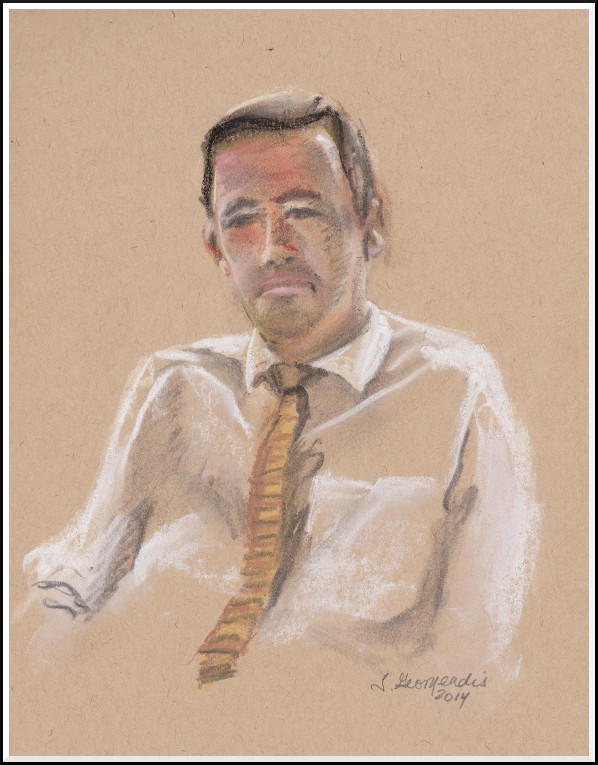
©2014 Jennifer Georgeadis. 16cm x 20cm, pastel on toned sketchbook paper
August 27, 2014
Jen's Art in Games (Guest blog by Demetrios Georgeadis)
For the past few days I've been working out how I would like to incorporate some special trees into our game. Most of the trees we will be using in our game will be static images
which are just drawn to the screen. For a couple of scenes in our game, we will require trees with separate leaves.
Jen has made a fabulous tree graphic:
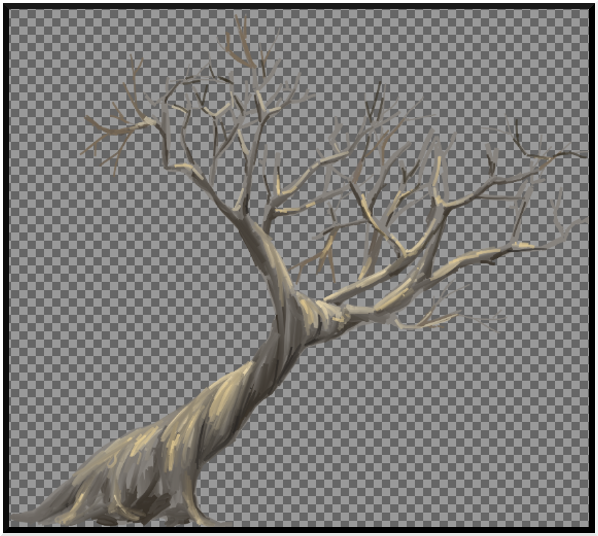
©2014 Demetrios and Jennifer Georgeadis. Digital oils
For this game, I am using a much improved system. Using the tree graphic as a guide, I paint in the branches which will have leaves attached to them in red.
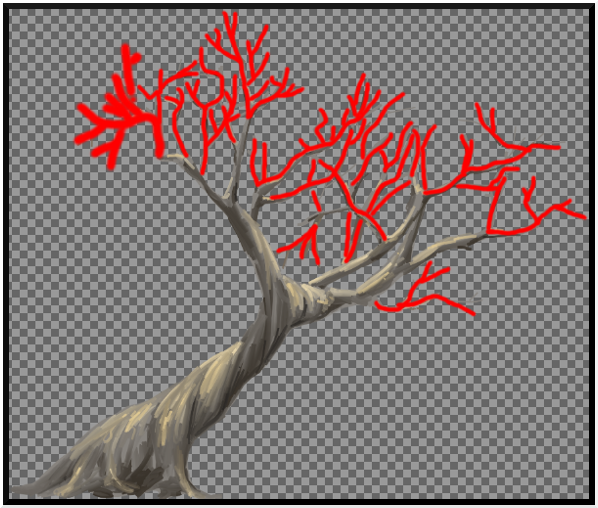
©2014 Demetrios and Jennifer Georgeadis. Digital oils
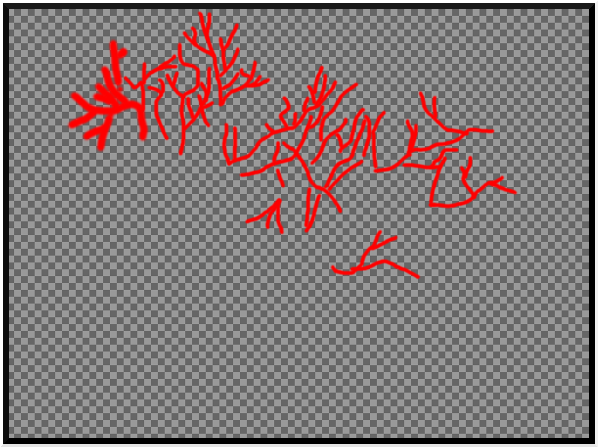
©2014 Demetrios and Jennifer Georgeadis. Digital oils
The images for the leaves look like this:

©2014 Demetrios and Jennifer Georgeadis. Digital oils
1-load the tree graphic
2-load the guide with the red lines
3-load the graphics for the leaves
4-scan the guide and place leaves where there are red lines
Here is the result :
Hmmm, what to do next? Let's see what Jen thinks....
August 25, 2014
The birds at my mom's bird feeder are too pretty not to paint:
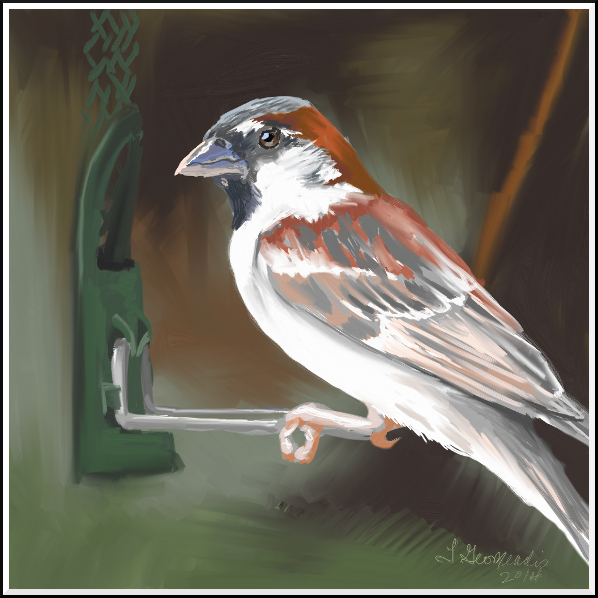
©2014 Jennifer Georgeadis. 8.5cm x 8.5cm, digital oil on canvas
August 22, 2014
A little midday sketch – one of the birds that have been happily flocking to my mom's new (and very popular) bird feeder:
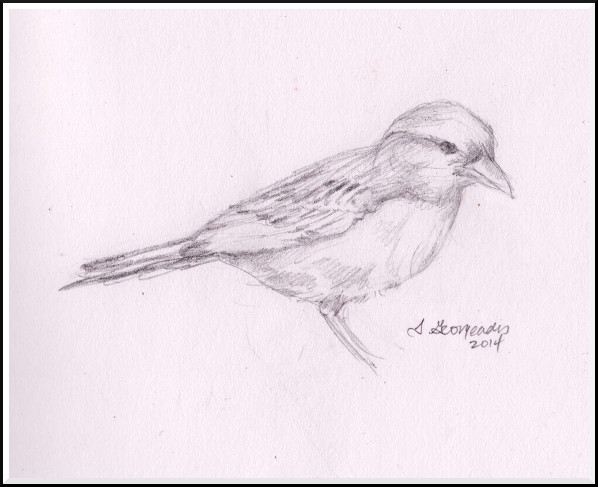
©2014 Jennifer Georgeadis. 14cm x 12cm, graphite on sketchbook paper
August 20, 2014
Jen's Art in Games (Guest blog by Demetrios Georgeadis)
Hello! Today I'm going to show you something Jennifer has a passion for - foliage. We have our lovely sky, and now we are going to put some land into the scene.
This piece of land is temporary, and looks only passable. It was created by me, and thus is what is described in the business as 'programmer art':
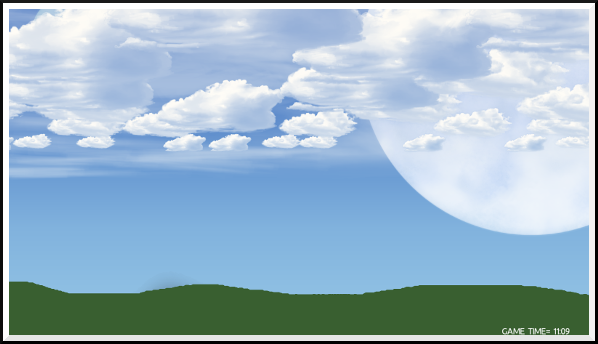
Our sky with some land added.
©2014 Demetrios and Jennifer Georgeadis. Digital oils
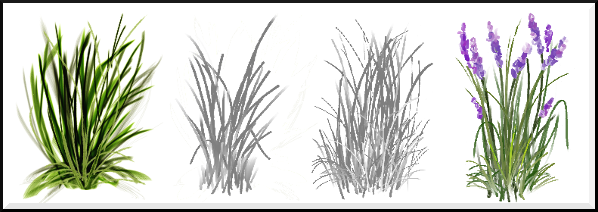
©2014 Demetrios and Jennifer Georgeadis. Digital oils

©2014 Demetrios and Jennifer Georgeadis. Digital oils
Let's do some trees next week - as soon as I figure out how I'm going to do them!
-Demetrios
August 18, 2014
Today I was painting the first of several grass elements that will be placed in our game world and then animated (one of my favourite parts!). Each grass element is drawn on a transparent background so that individual blades will be defined against whichever background happens to be on the screen at the time. Here, I've illustrated some of the painting styles I've used in making the grass elements:
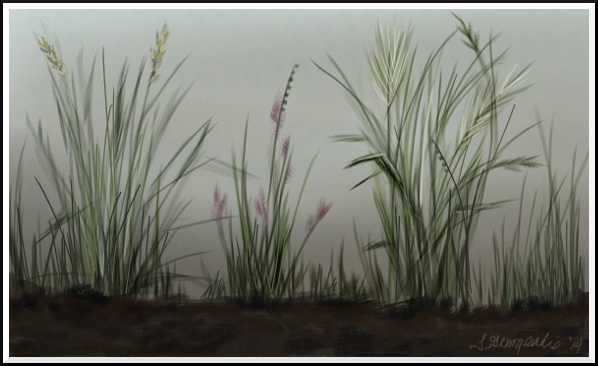
©2014 Jennifer Georgeadis. 10cm x 6cm, digital ink on canvas
August 15, 2014
In preparation for making my buoys sketch into a painting, I spent some time doing a colour study based on my photograph. I may have to tweak a few colours before I start painting. A couple of little thumbnail tryouts may be in order!
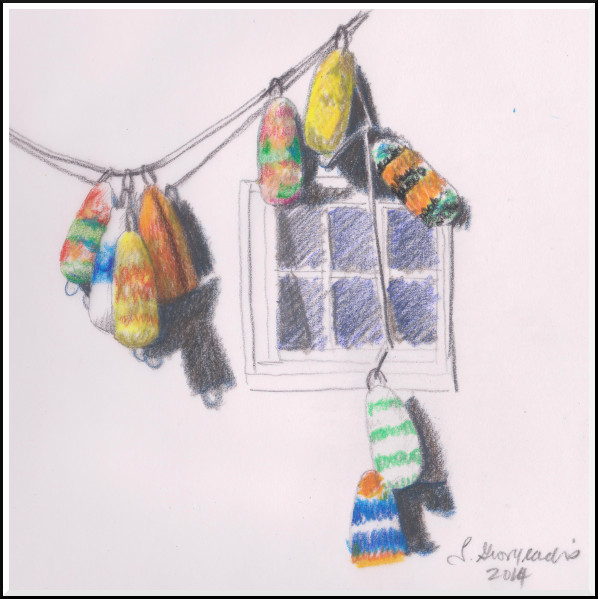
©2014 Jennifer Georgeadis. 15cm x 15cm, coloured pencil on sketchbook paper
August 13, 2014
Jen's Art in Games (Guest blog by Demetrios Georgeadis)
Hello again! Today we are finishing up the sky we are working on for our upcoming 2D game. I've shown you how Jennifer's digital Painter graphics have been assembled into my game engine
to create a sky:
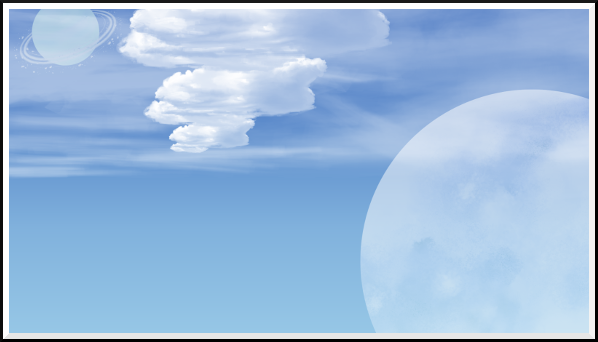
Moon, planet, high wispy clouds and fluffy clouds combined.
©2014 Demetrios and Jennifer Georgeadis. Digital oils
To add a glow I am going to use an older technique, one that is very much an old film optical effect, recreated on the computer.
Here is the scene without a glow effect:
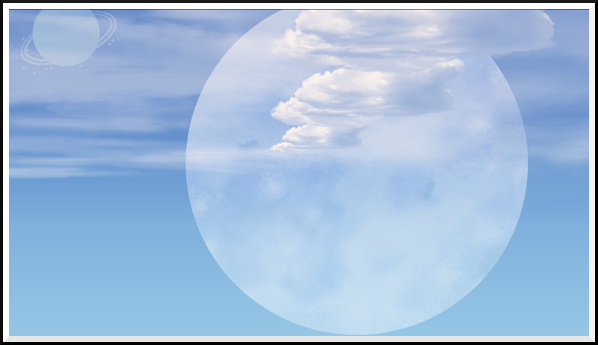
©2014 Demetrios and Jennifer Georgeadis. Digital oils
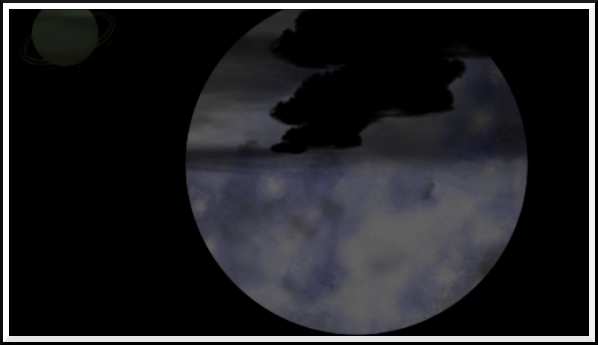
©2014 Demetrios and Jennifer Georgeadis. Digital oils

©2014 Demetrios and Jennifer Georgeadis. Digital oils
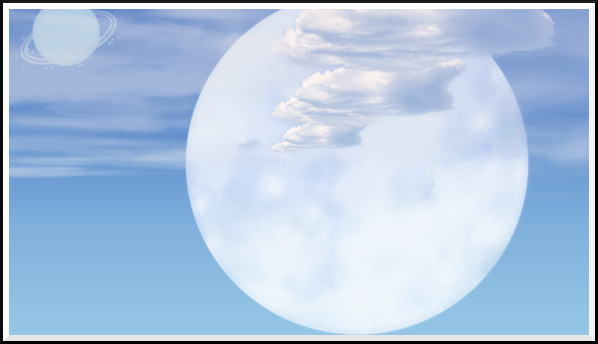
©2014 Demetrios and Jennifer Georgeadis. Digital oils

Tree without glowing moon and with the glowing moon effect.
©2014 Demetrios and Jennifer Georgeadis. Digital oils
 ©2014 Demetrios and Jennifer Georgeadis. Digital oils
©2014 Demetrios and Jennifer Georgeadis. Digital oils
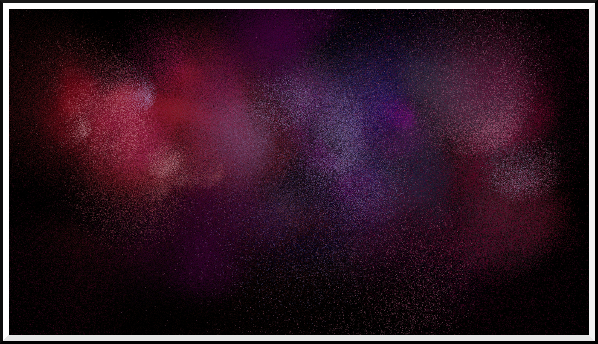 ©2014 Demetrios and Jennifer Georgeadis. Digital oils
©2014 Demetrios and Jennifer Georgeadis. Digital oils

©2014 Demetrios and Jennifer Georgeadis. Digital oils
Here is a video of the final result:
Next week I hope to guest blog again, see you soon!
-Demetrios
August 11, 2014
With the supermoon and Perseids meteor shower occurring this week, it seemed fitting to spend some time painting the cosmos:

©2014 Jennifer Georgeadis. 16cm x 9cm, digital airbrush on canvas


